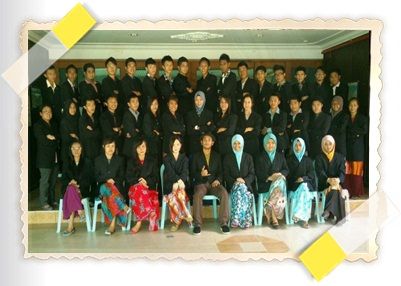Sabah, the second largest state in Malaysia, is situated at the northern part of the island of Borneo, the third largest island in the world. It covers an area of 72,500 sq. kilometres with a coastline of 14,400 kilometres long washed by the South China Sea in the West, the Sulu Sea in the Northeast and the Celebes Sea in the East.
Known to the world as "THE LAND BELOW THE WIND", Sabah is rich not only in natural beauty and resources, but also in the cultural heritage of its people.
Flora and Fauna

Flora and Fauna

Sabah is a botanical paradise. The world's largest flower, Rafflesia whose huge red bloom can grow up to a metre in diameter, is found in Sabah. Many species of orchids, pitcher plant and rhododendrons are endemic to sabah
Sabah is also a rugged country. The mountainous terrain are intersected by many rivers which flow through valleys across fertile plains. The jungles and forests are interlaced with numerous caves and there is the majestic Kinabalu, the highest mountain in Southeast Asia towering 4,101 metres.
The lush greenery provides home for wildlife such as the Sumatran Rhinoceros, Orang-Utan, Elephant, Mousedeer, Monkey, Flying Squirrel, Barking deer and birds.
Sabah's People and History
Sabah is also endowed with a heterogenous population. The indigenous population are made up of some 30 groups using more than 50 indigenous languages and not less than 80 dialects.
The main ethnic groups are: the Dusun/Kadazan - the largest group who make up nearly one third of the population, the Murut, the Paitan and the Bajau. Other indigenous groups include the Bonggi, the Iranun, the Ida'an and the Brunei. In addition, the Chinese make up the main nonindigenous group. Therefore, the people of Sabah are varied in their respective cultural backgrounds.
Based on archaeological findings, Sabah was inhabited by people from as early as 28,000 years ago. Islam came to Sabah towards the end of the 15 and 16 centuries Through the Arab and Indian traders and also as a result of the expansion of the Brunei Malay Sultanate.
It was another two centuries more before the Europeans came to Sabah. In 1775, the British East-India Company opened a trading base in Balembangan Island. However, it was the British North Borneo Chartered Company who effectively ruled Sabah from 1881 until 1942 when the Japanese occupied the state. After the devastation of the War, Sabah became a British Crown Colony until 31 August 1963 when it obtained self-government from the British. On 16 September 1963, Sabah together with Sarawak, Singapore and Malaya joined the Federation of Malaysia
pitcher plant
Rhododendrons





 Sabah Introduction
Sabah Introduction










.jpg)



















